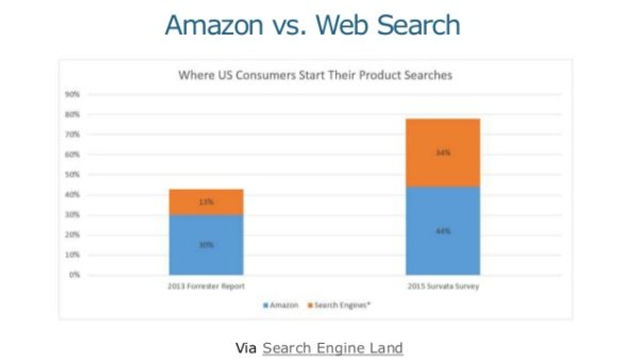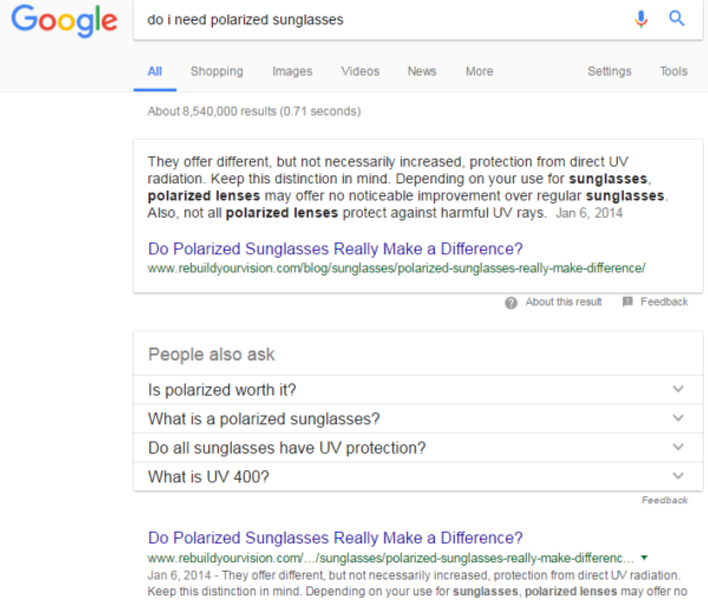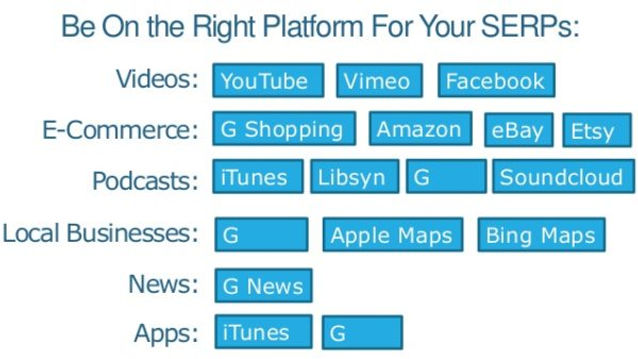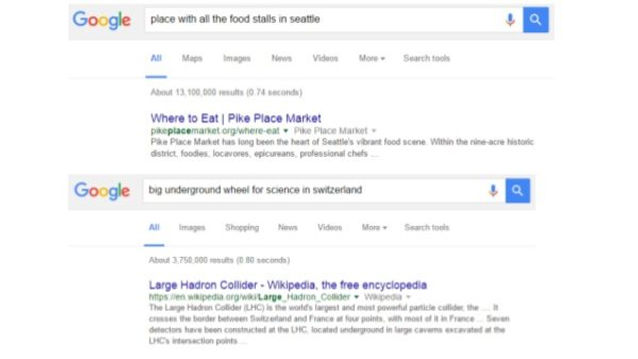Search Engine Trends: Rand Fishkin Weighs in on Google and More
- Fahad H

- May 21, 2017
- 6 min read

Advances in search engines make it seem like they can read your mind. But as a marketer, how can you read the minds of search engines – to know what they like, what they don’t, and how they’re working?
Well, you can’t read the mind of Google, but you can read seven insights from the Wizard of Moz, Rand Fishkin, which he shared in his presentation, The Absolute Most Up-to-Date Presentation on What the Heck is Going on With Search Engines, at Content Marketing World 2016.
Rand likes to count down so I’ll honor his approach in this post.
7. Google is still growing but others are too
Sure, Google has become ubiquitous – and even a verb. It consistently receives over 85% of all search engine traffic in North America, according to Gs.StatCounter..@Google consistently receives over 85% of all search engine traffic in NA via @statcountergs. #SEO Click To Tweet
While it remains king, it isn’t the only site where people search. Though still used by less than 1% of searchers, DuckDuckGo is the fastest-growing search engine, mostly due to the fact that it doesn’t track searches or users.
But don’t think of search simply in the framework of search-engine platforms. YouTube, actually, is the No. 2 search engine. Facebook, for example, is eager to keep visitors on its site and has become a growing resource used by searchers.
And don’t forget one of, if not the, largest commercial search “engine” of all – Amazon.com.The largest commercial search engine is @amazon, says @randfish. #SEO Click To Tweet

HOW YOU CAN REACT:
Don’t ignore a search channel because it’s not Google.
See where your competitors get their search traffic (SimilarWeb PRO is a resource for this).
Apply different tactics in your content to reach audiences on different sites. (For example, this article shares Amazon’s ranking factors.)
Deliver content for multiple search engines. (For example, Moz uploads a video to its own website because it wants to rank for it on Google. Three months later, it publishes the same video to YouTube to gain traction there.)
HANDPICKED RELATED CONTENT: Feed Your Hungry Content Channels With a Powerful COPE-ing Strategy
6. Google now answers simple queries – users don’t need to click
If your site is the top resource to answer a simple question, Google is taking your information and sharing it directly on the search page (featured snippet). You don’t even get a click.

Now a site with the premium No. 1 position on the results page appears twice (in the published answer from Google [Rand refers to this as the “0” position] and in the No. 1 position).
Moz thought it would lose traffic as Google revealed the answers, but traffic grew. In contrast, some sites have lost by some estimates up to 50% of their traffic – half of their search volume is now satisfied by the featured snippets, visual carousel results, and Google Maps pages that show up in results before organic links.

HOW YOU CAN REACT:
Research your keywords to pick ones with higher click-through rates. (You can estimate CTRs in Google AdWords’ Keyword Planner or use Moz’s Keyword Explorer for specific numbers.)
Focus on structuring your content to be a featured snippet in search engines. (Learn more about structuring for snippets in this article.)Focus on structuring your #content to be a featured snippet in search engines, says @randfish. #SEO Click To Tweet
HANDPICKED RELATED CONTENT:
5. Keyword data is more obfuscated, less reliable, and less accessible
When you peruse your keywords in AdWords’ Keyword Planner, do you wonder how the same number of searches occurs for several phrases? What are the chances two keywords will be searched for the same number of times? Well, the number in the Keyword Planner is only an estimate and is based on an overlapping range.
As Rand shares, those keyword volume search numbers don’t mean what you think they do. And when it has no related suggestions for high-volume queries, don’t believe it. Interpret the available data using other resources and research.
HOW YOU CAN REACT:
View AdWords’ keyword volumes as relative comparisons and ranges.
Use Google Trends for more accurate volume comparison.
Bid (and pay) for Google ads incorporating your keywords to discover the best data about volume, conversions, and trends (Google shows the total impressions to customers).
Don’t rely exclusively on suggested related keywords in AdWords.
Use these research extensions (1) search, (2) people also search, (3) similar page ranks, (4) semantically connected, (5) topically related, (6) questions concerning these.
TIP: Suggested free tools (some have paid versions too) for some or all of those research extensions include SEMRush, KeywordTool.io, Moz Keyword Explorer, Ubersuggest, and Answer the Public.
HANDPICKED RELATED CONTENT: 8+ Tools to Find Related Keywords for Your Content
4. Twitter is Google’s primary platform for social results
Even Google doesn’t like GooglePlus anymore. Content from Twitter now shows up more than any other social media platform. MozCast research reveals that content from Twitter shows up in 6.6% of Google searches. And more than one in 20 searches include results from Twitter..@Twitter #content shows up in 6.6% of @Google searches, says @randfish. #SEO Click To Tweet
HOW YOU CAN REACT:
Search for your keywords on Twitter and see which people (handles) are talking about it.
Remember engagement and recency govern display of tweets.
Develop a strategy to reach influencers on Twitter who are using your keywords, including hashtags, trending topics, news.
If you share in Google+ now, keep doing it as it still has some benefits. If you don’t use Google+, continue to ignore it.
HANDPICKED RELATED CONTENT: 5 Ways to Get Noticed by Influencers on Twitter
3. There are more nontraditional ways to get into Google than ever before
Only 3% of search results reflect the “classic 10 blue links,” according to Moz’s research. Focusing only on securing those classic results dramatically reduces organic click-through rates.
As such, various content search types – knowledge panels, images, related questions, videos, featured snippets, knowledge cards, etc. – are attractive to Google.Knowledge panels, images, related questions, videos, featured snippets are attractive to @Google. @randfish Click To Tweet
However, it isn’t as easy as adding more video to your site. Google restricts what sites can get into certain types of content listings. For example, video snippets only appear from YouTube and Vimeo. On mobile, more kinds of searches are limited to particular networks, such as apps from Google Play and the iPhone App Store.
HOW YOU CAN REACT:
Analyze which types of SERPs appear for the keywords you care most about.
Determine what verticals and SERP types you should optimize for. (For example, if you see images in the SERP, you might want to add some visual charts to text-only content.)
If you can’t break into a particular SERP format, consider alternative ways. (For example, instead of “Seattle sights,” you could optimize for “Seattle sightseeing map.”)
Be on the right platforms for keyword search.

HANDPICKED RELATED CONTENT: 3 Ways to Re-Use Your Content Magnets to Dominate SERPs
2. Matching searcher intent is more important than matching searcher keywords
Google strongly seeks to deliver content that the searcher wants to find. Keyword targeting is still needed, but it’s no longer a competitive advantage. Marketers must consider search intent more than they ever have.Matching searcher intent is more important than matching searcher keywords, says @randfish. #SEO Click To Tweet

Your content’s SEO must be more sophisticated, incorporating not just raw keywords but also related keywords and addressing related topics.
HOW YOU CAN REACT:
Use keywords in page title, meta description, URL, and first few paragraphs.
Incorporate related topics – as identified on search results pages – into your content to indicate its relevance to the primary keyword/topic.
Serve keywords with matching intent together on one page.
Provide thorough answers to a searcher’s query.
Offer unique value over what other sites provide – not just unique content but value searchers can’t get from other answers in search results.
HANDPICKED RELATED CONTENT: Why Does User Intent Matter So Much to Your SEO?
1. Machine learning and engagement are Google’s future
RankBrain, one component of Google’s artificial intelligence, enables queries to be interpreted better. For example, it interprets a search for “highest quality mobile phones” by returning results with phrases such as “best smart phones,” “best mobile devices,“ “best phones.”
Google also evaluates users, usage, and engagement rates. If a site ranks high for a topic but gets only a few clicks – or lots of clicks but quick returns to the search results page, Google will push the site down in the rankings, and move up content that better satisfies searchers.
HOW YOU CAN REACT:
Make the user experience the cornerstone of your SEO strategy.
Don’t let bad pages drag down your rankings. Your overall site’s search engagement reputation influences all your pages. (Eliminate bad search-engagement pages and you could see your rankings on other pages rise.)
Serve multiple searcher intents, not just your brand’s intent.
Avoid features that dissuade or annoy.
Ensure that your site loads as fast as possible.
Deliver an easy, enjoyable experience on any device.Eliminate bad search-engagement pages to see your rankings on other pages rise, says @randfish. #SEO Click To Tweet
Conclusion
Now you know the seven things about what’s going on with search engines. More importantly, you now have 25-plus tips to help your company evolve in this ever-changing world of SEO. And if you only can take away one thing from Rand’s advice, I vote for this one, “Make the user experience the cornerstone of your SEO strategy.”
Please note: All tools included in this blog post are suggested by the Content Marketing World presenter, not the CMI editorial team. No one post can provide all relevant tools in the space. Feel free to include additional tools in the comments (from your company or ones that you have used).
Cover image by Joseph Kalinowski/Content Marketing Institute








Comments